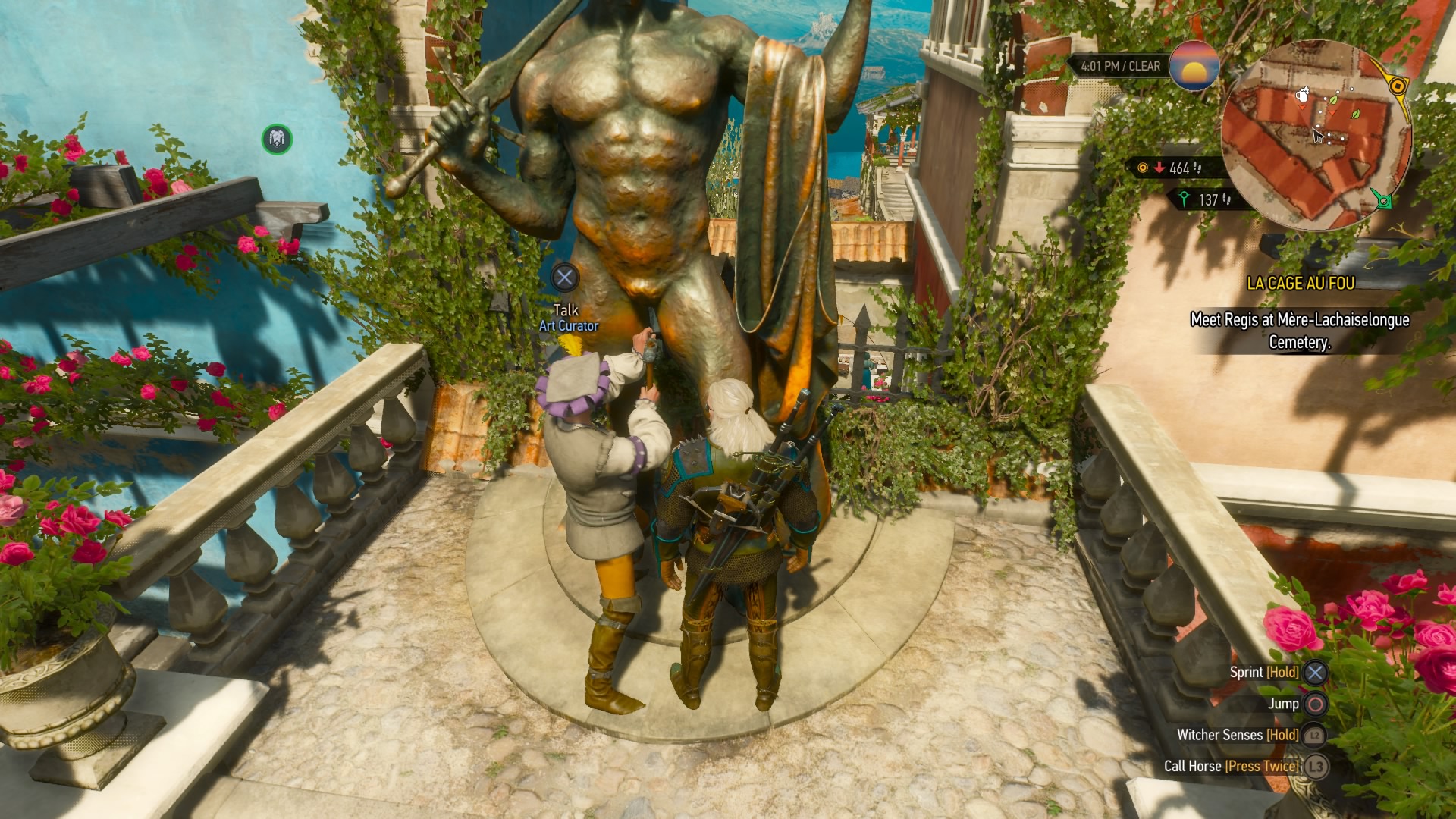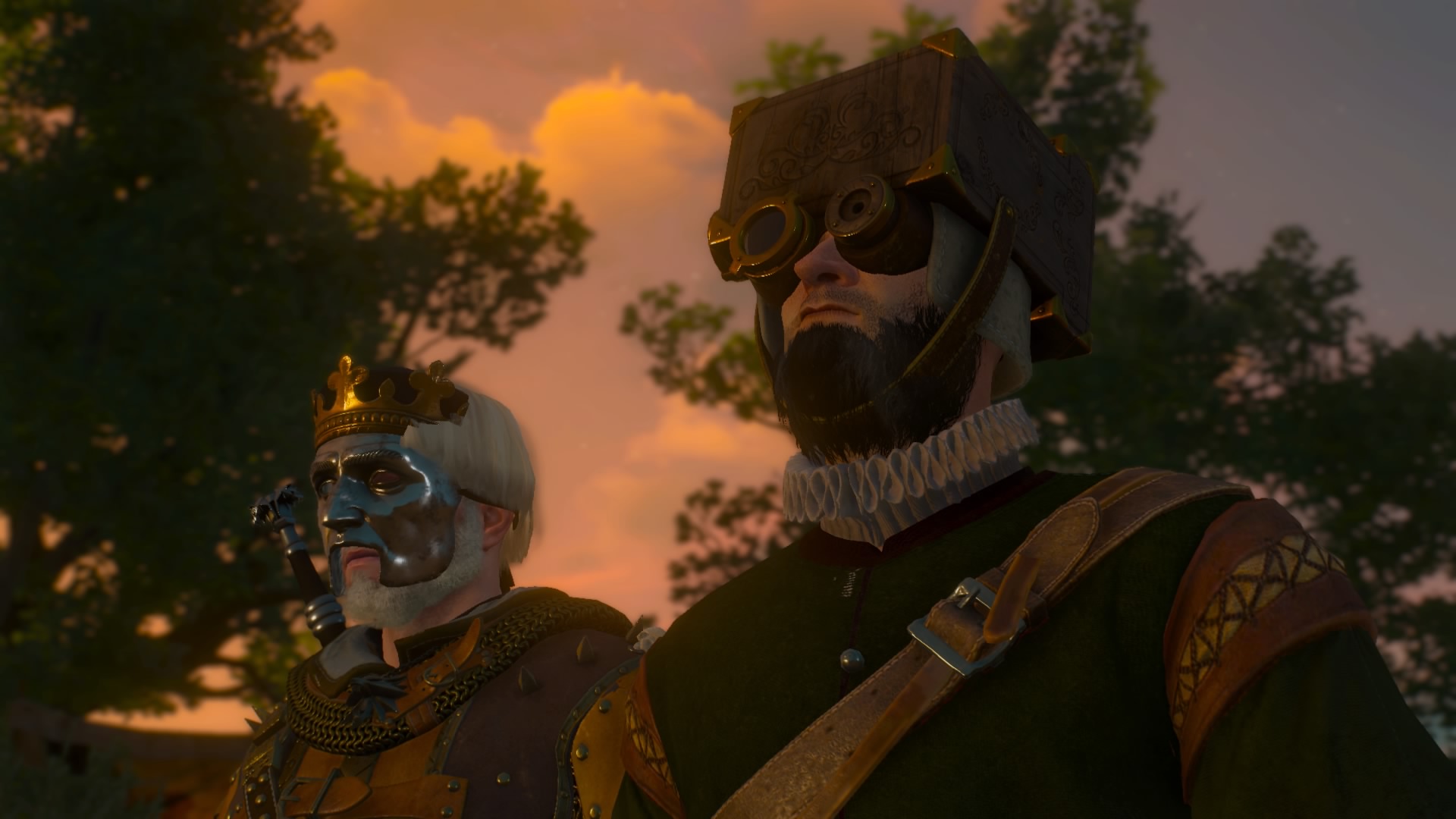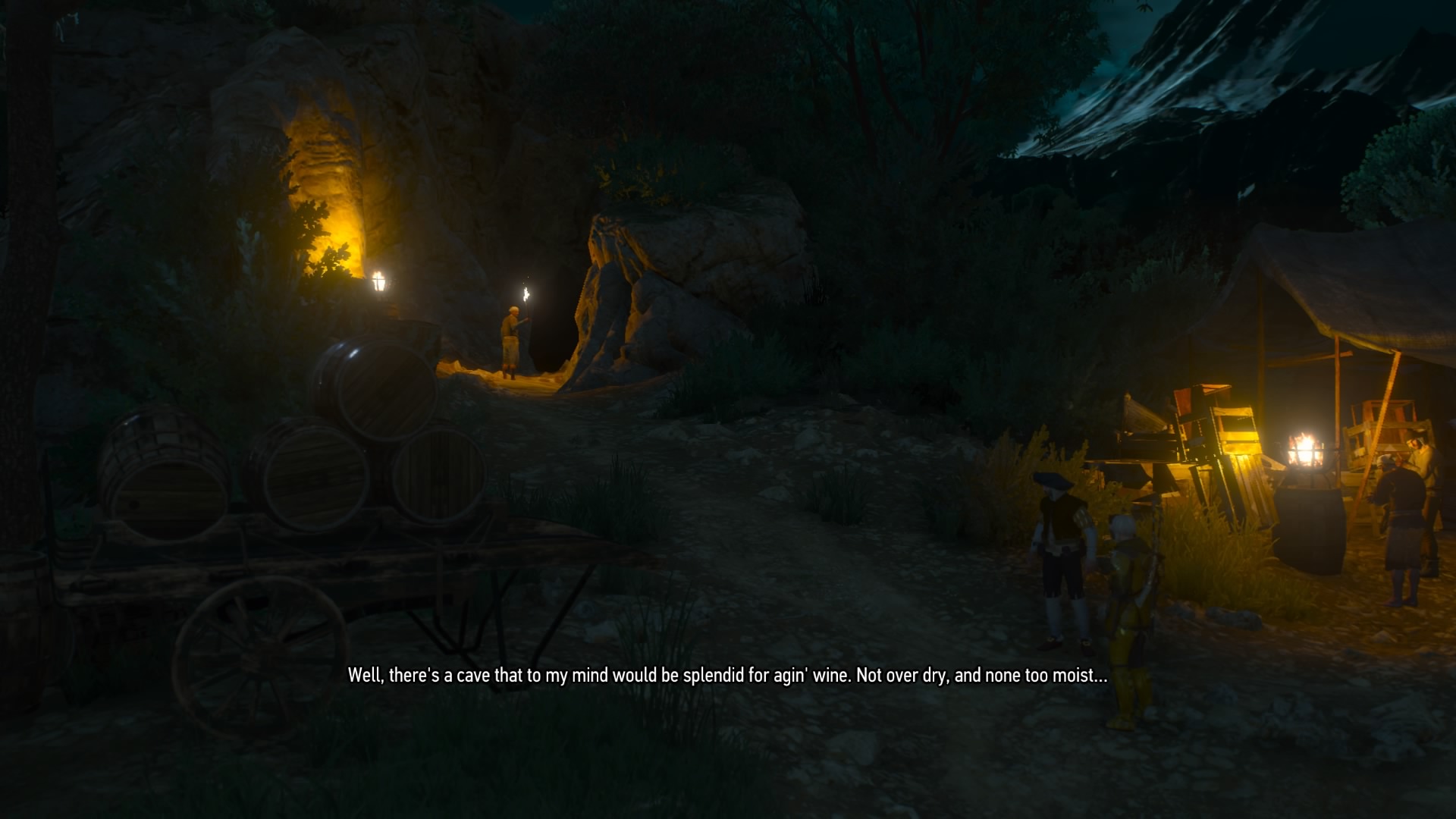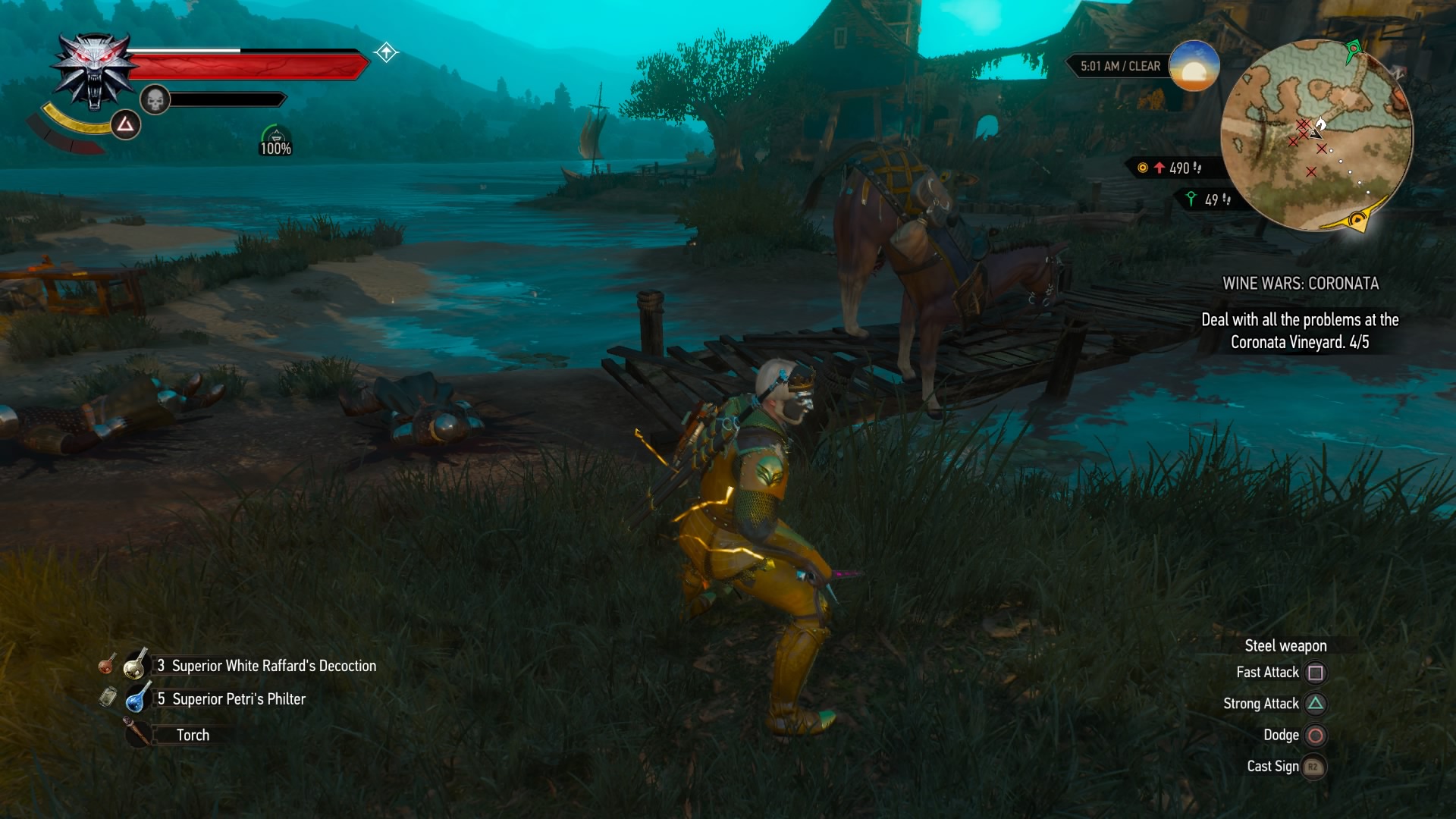A masterpiece in art may be defined by how much virility it elicits in the audience. Or was that defiled by?
1. An Exercise in Reductionism
A masterpiece in videogames may be defined by the way in which a videogame’s base components are balanced in relation to one another. Each component may not necessarily be great, but together coalesce to form a cohesive whole, not becoming ‘more than the sum of its parts’, but expressing with fidelity through each component a shared, coherent ideal.
In real-time RPGs, achieving such a balance is especially difficult, as there is often an inherent and necessary conflict between two common and equally important components: the combat (the player’s direct interaction with the game) and the static management of statistics and equipment (the player’s indirect interaction with the game).
As we expect an RPG to be long and expansive, it is important that real-time combat mechanics allow for long periods of both fragmented and continuous play, and therefore they must be simple; sometimes to the point of shallow banality. Conversely, the indirect gameplay must be detailed and laborious, lest the player be left with nothing exciting to manage, a diluted connection between the direct and the indirect gameplay, or one consuming the other: overly-successful in-depth management by the player may result in combat itself becoming redundant; conversely, a shallow manager may drown in the depths of deep combat.
These difficulties can be mitigated by turn-based combat as, then, this conflict between direct and indirect gameplay ceases to exist: turn-based combat itself is indirect, and therefore complements more easily the indirect nature of management. Management and combat may also act as complementary forms of strategy: combat short-term and moment-by-moment strategy; management long-term and overarching strategy. And, as the player is effectively navigating menus in both combat and management, there are fewer disparities in how the player interacts with the game; whereas, if the player is engaged in real-time combat as well as in-depth management, then a disparity in interaction is created. But this disparity may also be used as a pacing device to retain the player’s attention for extended periods of time.
In the Duchy of Toussaint, Geralt in his Pierrot-like armour blends into the crowd. Dyes may be used to accentuate the clown-like, and sometimes corpulent, quality of all witcher gear.
2. A Brief History of The Witcher 3
Wild Hunt, while very good indeed, failed to properly balance its already-flawed components. The simplistic combat, though well supported by an in-depth management system, was mechanically convoluted and awkward; but, if the mechanics were convoluted, then the menu system with which the player managed character building, crafting and equipment, was positively labyrinthine. And the pacing of the narrative was inconsistent—the most egregious lull being in the middle which, while servicing fans of the series, did little to adequately service the main plot.
By the release of Hearts of Stone these individual flaws had been addressed. The menu and the movement systems were revised: the player could now easily navigate the menu and the battlefield alike. The narrative was also more consistently paced from beginning to end in Hearts of Stone, its overall arc scarcely interrupted; although it did not successfully build up to each important battle, nor did some of the built-up battles offer much new, or new and unique, in the way of beasts and men to slay. And, ultimately, Hearts of Stone felt like a fleshed-out side quest from Wild Hunt; a quality which was, admittedly, much of its charm.
Would-be vintners wait haplessly outside Toussaint’s many caves of great wine-aging potential in the vain hope of a wandering witcher clearing these caves of infestations. But even more exciting than the local agriculture is the literary scene. Hanse Bases are bandit-literati strongholds, the razing of which culminates in a battle against the foremost members of the bandit literati. Fight for poetry! Save the bards from an inevitable death-by-prose! Blessèd be the image, not the word!
3. Blood
In Blood and Wine, Geralt is lured by a simple contract to the Duchy of Toussaint. A beast is on the loose, with a penchant for moralising irony and dismembering knights-errant: charming mediaeval anachronisms even in the world of The Witcher, where in modern cities not even peasants believe in ludicrous fairy tales, like vampires, anymore. Concurrently, the Duchessa Anna Henrietta is presiding over a tourney, to which have been invited foreign knights-errant and dignitaries. A potentially prickly political situation looms if The Beast of Toussaint were to endanger such important foreign personages under the Duchessa’s patronage. Geralt, amongst such quaint nobility, is like a fish out of water; whereas in the noxious swamps and shite-caked streets of the Northern Realms in Wild Hunt, he was at home. Indeed, Toussaint is an idyllic vision of provincial France and Italy, all verdant vineyards and unspoilt castles: an indulgent digestif after the occupied castles and outraged farmlands of the Northern Realms.
Although Blood and Wine’s narrative and setting are not quite on the same scale as the saga-like Wild Hunt, they still cover much ground in subject matter; and the smaller-scale narrative and geography allow for a more in-depth examination of the principal characters and themes, and a countryside more intelligently populated with tantalising question marks to answer with exclamations of steel, silver and sign language.
The simplicity—and subsequently expanding complexity—of the opening, allows for the narrative to move seamlessly from light and black humour, to more serious moments of melodrama. Some of the main and side plots contain fourth-wall breaking jokes and moments of post- and anti-post-modern surrealism. But this self-indulgence is enjoyable not only for the developers, but for the player, as well. And it is important to the epilogue that the fourth wall is broken so that developer, player and character may be united in understanding the finality of proceedings. Otherwise that popular aphorism about The Witcher and endings might have spoilt the ultimate sentiment.
It is worth noting, also, that foremost amongst Blood and Wine’s themes is forgiveness, and/or the lack thereof; perfect for the coda of a character who, over the series, has repeatedly revealed himself to be a secret sentimentalist hiding behind a hard-arse exterior.
To have any hope of defeating The Hipless Horse of American folklore, Geralt must put to use the expanded mutation system, which not only grants him powerful new buffs, but also opens up new slots for old signs. The grandmaster witcher gear and the buffs from his new vineyard-cum-house are not only equally helpful, but also put to use the wealth of Florens he has likely accumulated during Wild Hunt and Hearts of Stone.
4. Wine
The way in which the gradually unravelling detective story (who, or what, is The Beast of Toussaint?)—ever growing in grandeur—is composed, completes the final component of the balance that Blood and Wine achieves. The grandiose scale of Wild Hunt necessitated prolonged passages in which the player was trapped in the main plot, from and into which the writing and gameplay sometimes stumbled; unable to connect the main plot to the disparate elements of narrative and gameplay: the side-questing, the exploration—the freedom outside of the main plot’s prolonged passages. On a smaller—yet still grand—scale, Blood and Wine successfully weaves these elements together, into the one cohesive whole, by composing its prolonged narrative passages so that each is within itself a complete narrative arc, often ending in a climax; unlike the excerptesque and sometimes-flat vignettes of a grander tale in Wild Hunt. In Blood and Wine as one passage ends, the player is thus satisfied by the climax and, now released, is happy to explore or side-quest for a while before continuing with the main plot when the desire arises again. CD Projekt RED connects these elements, in a sense, by carefully disconnecting the prolonged passages of main plot that they become complementary elements contained within the one component: functioning in gameplay and cadence as exquisitely-composed side quests, but telling the one well-segmented narrative and, therefore, complementing perfectly the other elements of gameplay while simultaneously maintaining a greater significance.
But, in spite of CD Projekt RED finally achieving a balance wherein all components coalesce into the one coherent whole whose ideal is adventure, is Blood and Wine a masterpiece beyond the canon of the series to which it belongs? Blood and Wine relies not only on the player having already built their version of Geralt during Wild Hunt and Hearts of Stone to be able to truly appreciate the expanded character building, but also on their prior investment in the characters for some, though not all, of the narrative to feel significant. Yet, a better question might be: does it matter? Blood and Wine is The Witcher formula all but perfected, and a fitting end for Geralt—however he has been moulded by the player—because it relies on the player’s investment in Wild Hunt, Hearts of Stone, and the series as a whole.



